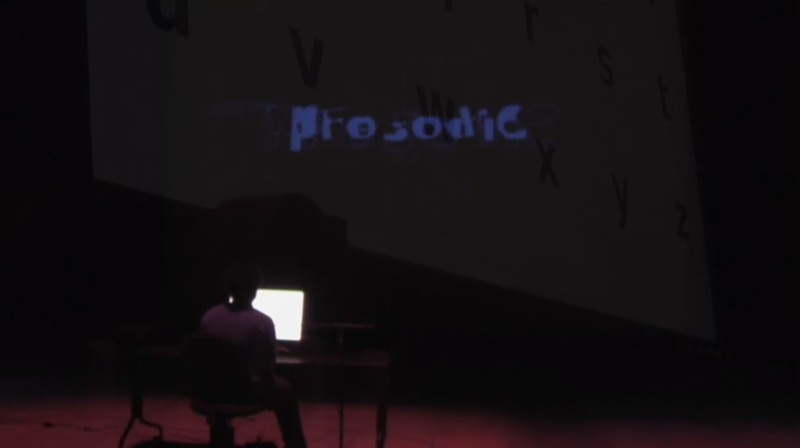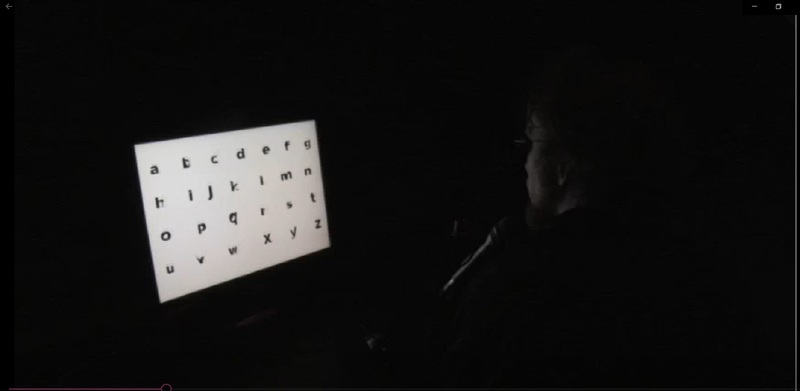the quick brown fox
Contenu
-
Titre
-
the quick brown fox
-
Créateur
-
Yannick Assogba
-
Jason E. Lewis
-
Date de création
-
2007
-
Langue
-
Anglais
-
Résumé
-
the quick brown fox est un projet dont le but est de modeler les lettres de l'alphabet selon la voix des participant.e.s. Ceux-ci parlent dans un micro, assis face à un écran qui montre l'alphabet écrit en noir sur un fond blanc. Les lettres changent de forme et se modulent selon la voix et l'intonation du participant ou de la participante.
Le processus se fait en deux étapes. D'abord, les informations de ton, volume et d'intonation sont utilisées pour ajuster la taille des lettres contenues dans les mots dits par le participant ou la participante, ou leur faire une transformation comme une rotation ou une translation. Ensuite, en empruntant des techniques inspirées de la programmation génétique, les glyphes produits à l'étape #1 sont intégrés à l'alphabet tel qu'il est présenté à l'écran, ce qui crée une transformation constante des lettres. Une interface physique sur laquelle est déposé un bloc représentant une lettre permet de changer entre le visionnement des lettres majuscules (si le bloc n'est pas déposé sur l'interface) ou minuscules (lorsque le bloc est déposé).
Devant le bureau où est assis.e le participant ou la participante, un grand écran dévoile des mots prononcés par celui ou celle-ci, puis les projette selon l'état de l'alphabet au moment où ils sont prononcés.
-
Description
-
« Created by Yannick Assogba and Jason Lewis; the quick brown fox aims to create a font whose glyph shapes are amenable to organic transformation informed by the vocal characteristics of a speakers voice.Amplitude and pitch information is extracted from the audio signal and mapped to transformations on the glyphs of a base font which are then blended into the current state of the typeface.
The blending of the glyphs is done using techniques inspired by genetic programming. The architecture also allows for multiple instances of a particular glyph to evolve in parallel (i.e. the font can evolve multiple glyphs for a particular letter with different appearances).
The title of the piece is the beginning of a common english pangram and holds particular meaning to me because it is a sentence I was made to write over and over again as a child in order to "improve" my handwriting. This project uses repetition to breed difference, rather than create uniformity. As such the projects attemps to address issues of identity and personality within digital typographic space. It also suggests one possibility of how writing can become performance.
"The history of typography reflects a continual tension between the hand and the machine, the organic and the geometric, the human body and the abstract system" - Ellen Lupton »
-
Notes sur les modalités procédurales
-
Interface physique
-
Parler
-
Thèmes
-
Voix
-
Lettres
-
Alphabet
-
Glyphes
-
Identité
-
Personnalité
-
Personne ayant créé la fiche
-
Aude Meunier-Rochon




